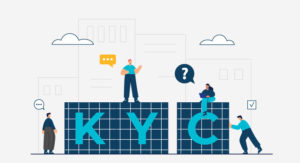Making Great Customer Onboarding Experience

Even though we’re past the pandemic, its impact on digital experiences can’t be underestimated. It has changed how people access financial services. The digital revolution has increased the number of people who use a range of financial services across the globe.
It has significantly impacted how people send and receive money, borrow, and save.
With a sudden shift in the way customers use the services, customer expectations have changed significantly as well. Compared to 10 years ago, Gen Z is now leading the Buy Now Pay Later industry.
These are the same consumers who are more than likely to see digital engagement as the industry standard and want a seamless customer onboarding experience for financial services.
What Consumers Expect from Customer Onboarding
According to a BAI report, “75% of millennials surveyed would switch banks for a better mobile experience.
Gen X on the other hand is looking to open more banking, saving, and loan accounts online.
Salesforce also conducted a survey of what customers expect from financial services and found that 80% of customers consider user experience a part of the service that an institution provides.
Around 30% of all customers abandon the onboarding process because it’s too long and complicated.
All the data points towards one thing. Financial institutions need to find a balance between seamless customer onboarding and simultaneously preventing fraud.
The best approach to providing great customer experience is to place identity at the center of customer experience. This can help brands build stronger relationships with customers based on trust.
Best Practices for Customer Onboarding
1. KYC in Financial Services
Know Your Customer is a series of checks every business has to do to verify a customer or entity’s identity. These KYC checks are done during customer onboarding and several moments during the customer lifecycle.
Types of financial institutions that have to comply with KYC checks include:
- Banking
- Credit
- Payments
- Money Transfer
- Cryptocurrency (Some jurisdictions).
Complying with regulations also helps in preventing financial crimes. It also helps businesses avoid many risks that come along with a failure to comply, including financial penalties, brand reputational damage, and more.
2. Building Trust and Reputation
Considering KYC checks and Identity checks as a service of your business makes good sense in this digital-first environment.
To establish quality relationships with customers, businesses need to find the right balance between:
- Personal identifiers
- Identity documents
- Behaviors and signals.
If a brand can successfully find the balance, it can instill greater confidence about its brand in a consumer’s mind right from the onboarding.
For customers, well-designed KYC checks and ideal customer onboarding practices remove barriers and provide access to financial services. It has one more benefit as it removes the risk of fraudsters abusing the system.
3. Risk Assessment and Multi-Layered KYC Solutions
Taking a risk-based approach to KYC is a crucial part of ensuring customer onboarding meets the industry standards and prevents fraudsters from being able to access the service.
A risk-based approach, including geography, finances, and other key demographics needs to be put in place.
Great customer onboarding solutions should have a built-in automated risk assessment. They show how much risk factors a customer has. The best KYC solutions for financial institutions are multi-layered, they combine risk management engines that search customer risk parameters.
4. Speed and Convenience Matter
Speed and convenience are as important as security when it comes to customer onboarding. Consumers don’t want to go through a customer experience that’s slow, clunky, and poor.
To avoid customers abandoning the customer onboarding process, KYC in customer onboarding needs to be done in minutes.
Quick KYC checks and good experience during customer onboarding help in building trust in a customer-business relationship.
5. Analyze and Adapt for Great Customer Onboarding
The best customer onboarding for financial services will aim to balance sign-up with compliance and risk management. To make the best customer onboarding solutions, businesses must provide analytics to improve the customer experience.
Businesses need to know which OS, browsers, screen resolutions, and devices customers are using to sign up. Which part of the customer onboarding process is experiencing the highest number of drop-off rates?
Businesses also need to focus on their customer onboarding conversion rate. How many prospects are automatically being accepted, rejected, or referred for review?
Identifying this data can create an improvement cycle that learns from mistakes, and continually evolves to enhance customer onboarding experience and conversion rates.
FAQs
KYC is know your customer, it covers a number of activities such as identifying and verifying a customer’s identity. Customer Due Diligence (CDD) verifies the identity of a customer and also assigns a risk profile to the customer.
If a customer has a high-risk level, they have to go through enhanced due diligence (EDD).
At a minimum, KYC checks should be done when onboarding a new customer. Ideally, businesses should do KYC checks when there are any changes to a customer’s situation.
The most robust KYC is an ongoing risk assessment, and it may be a requirement for EDD.
Any financial institution that is trying to onboard customers is responsible for doing KYC checks. This could be any activity, such as:
* Opening a bank account
* Getting a loan
* Real estate purchase, or more.
The customer has to go through KYC checks to be able to access services.













